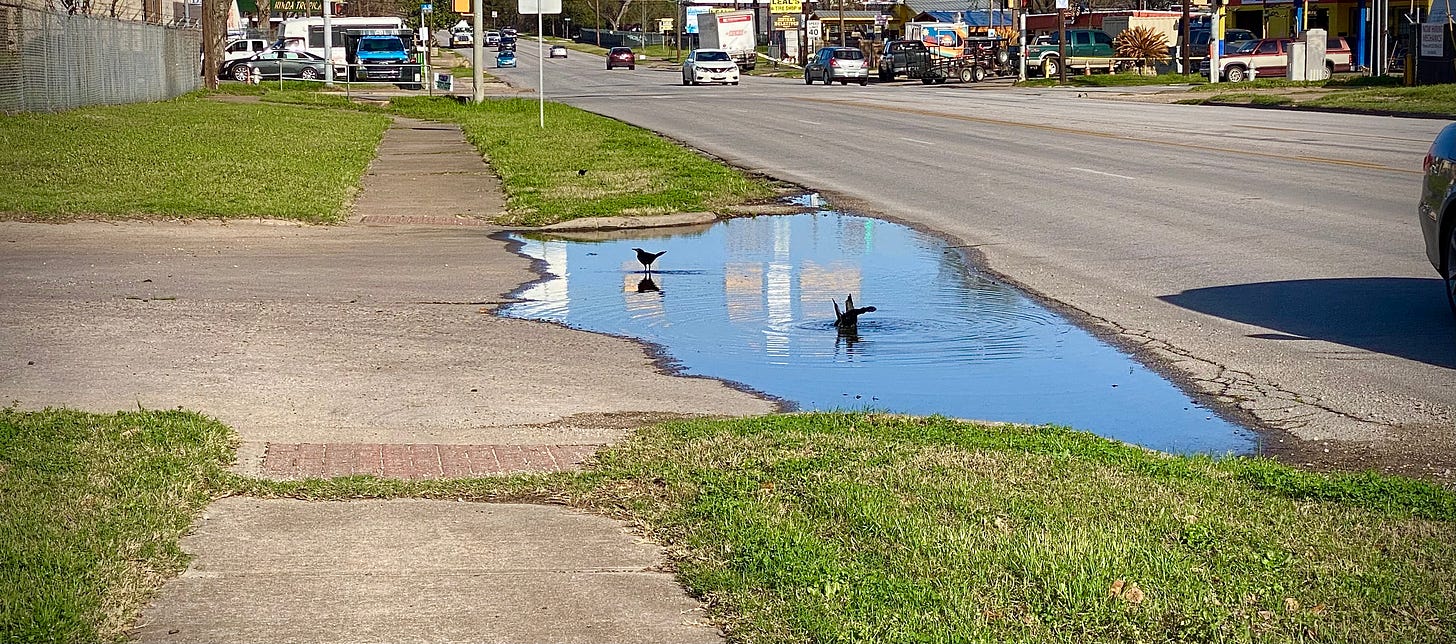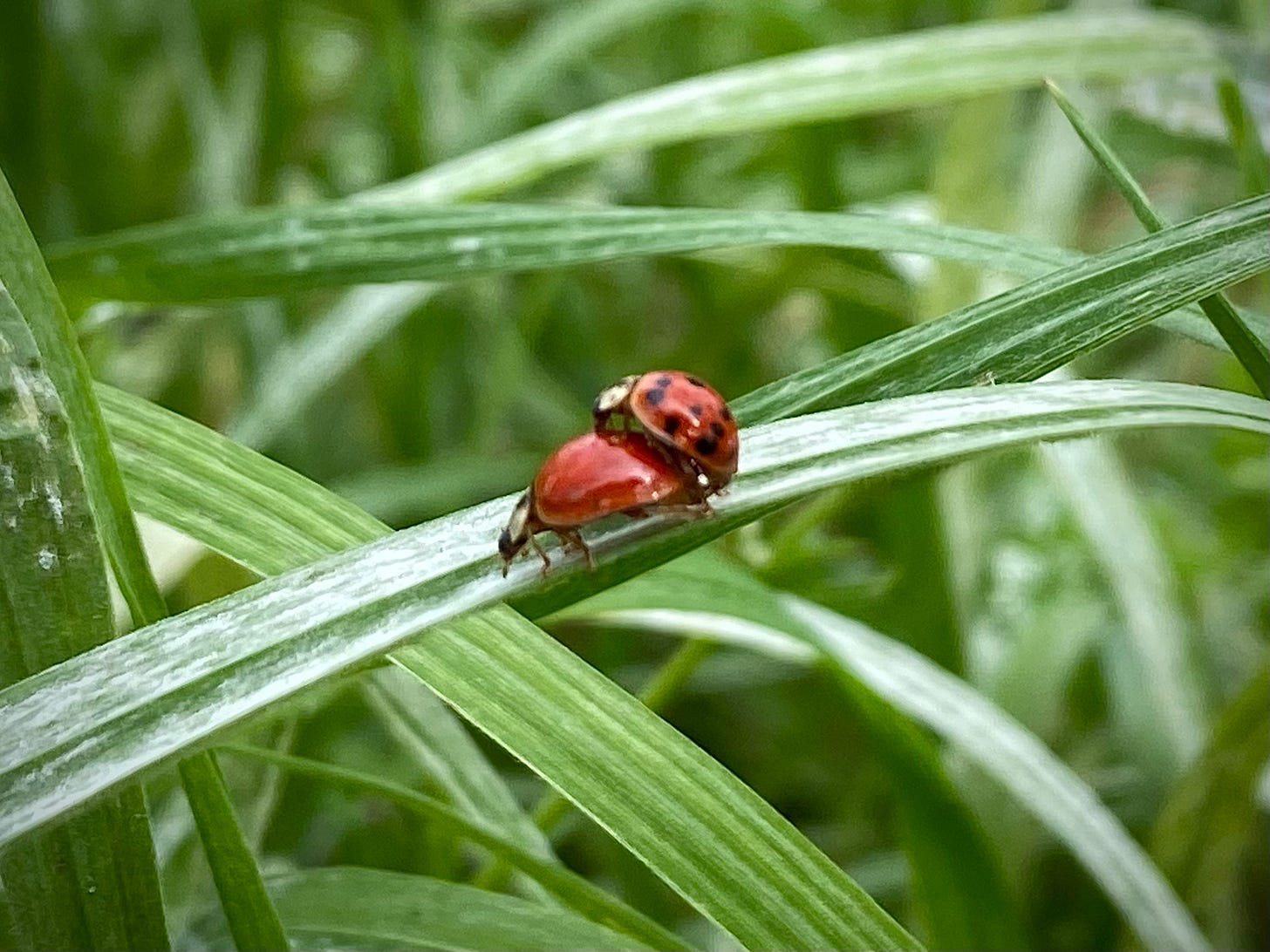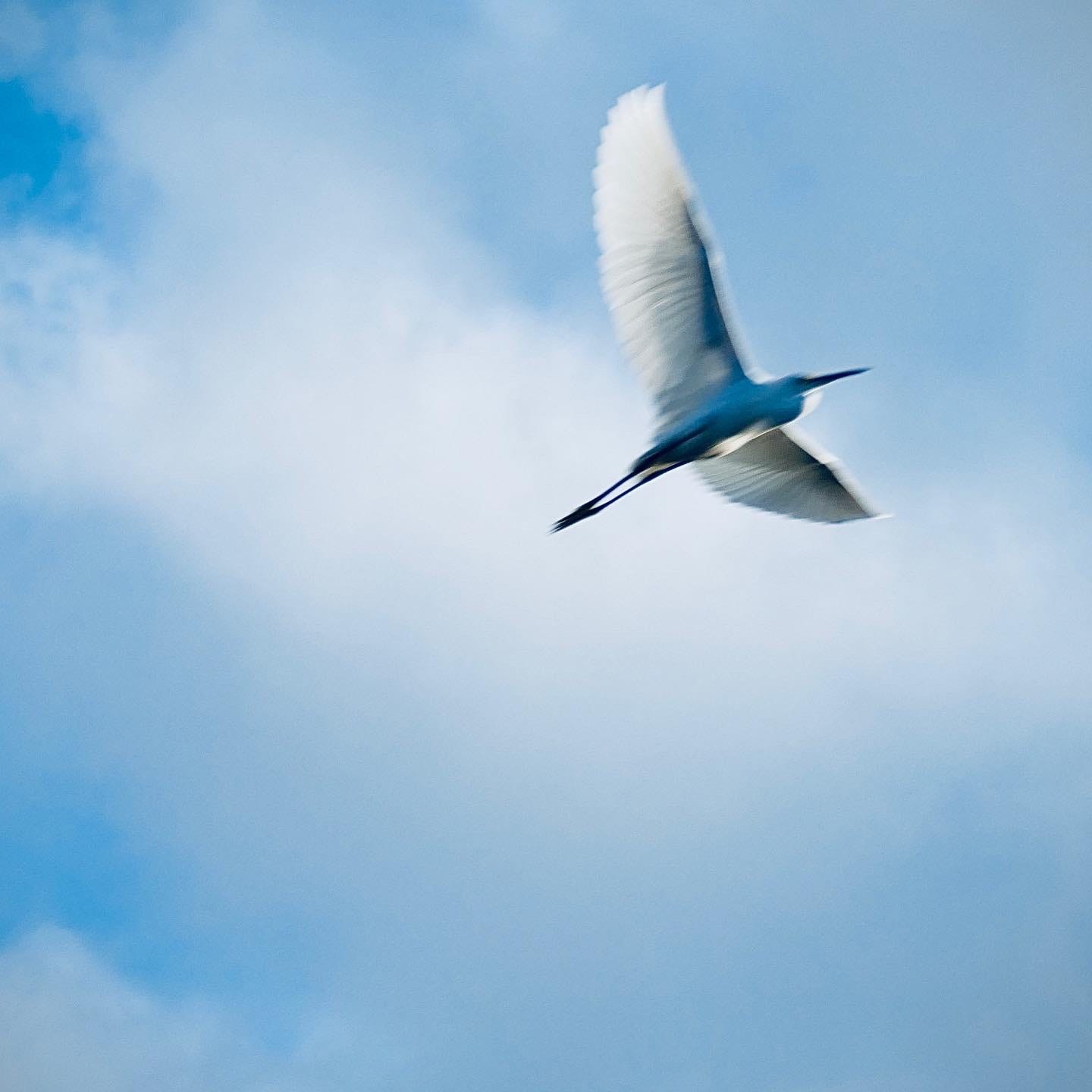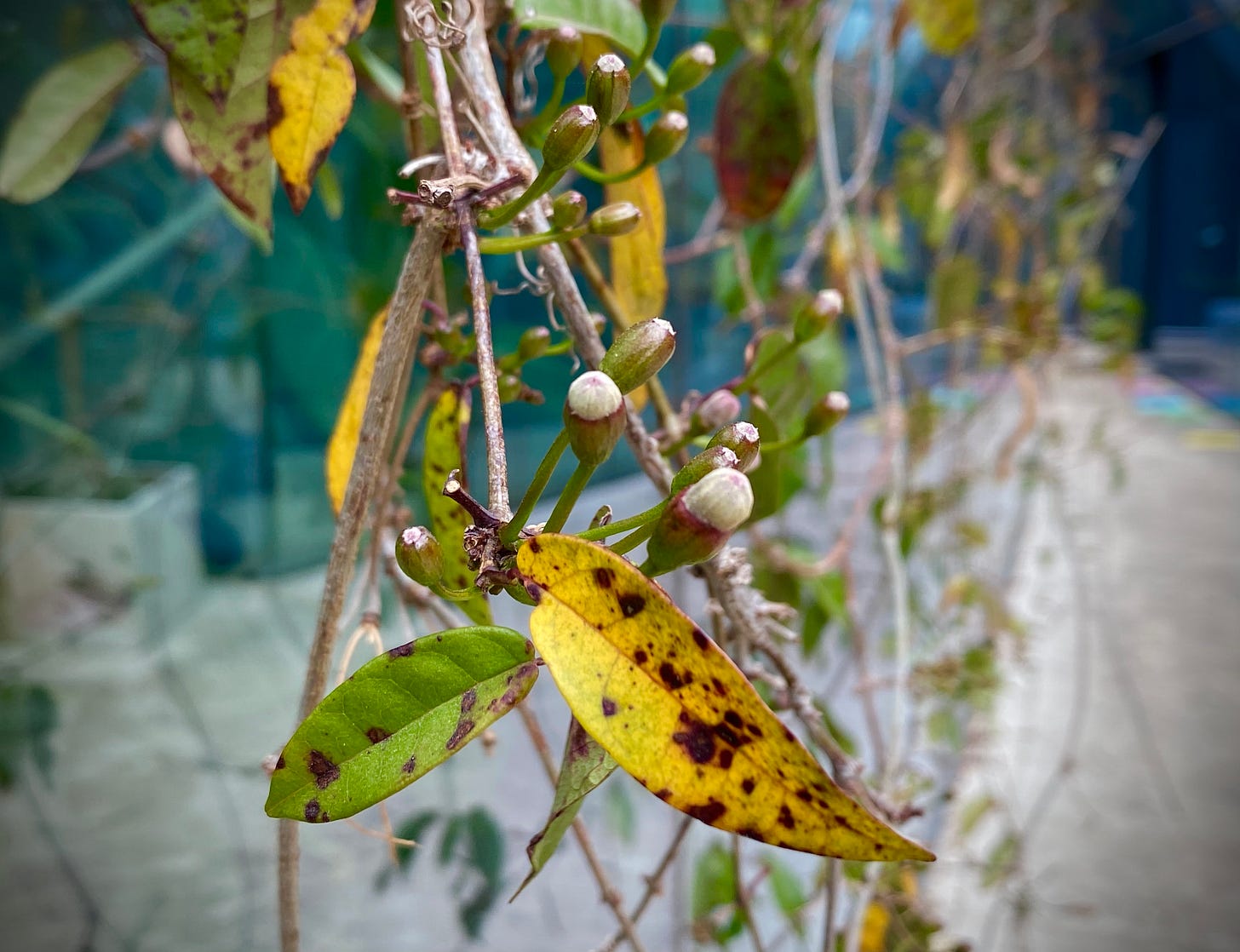Robots and moths
Eight years ago this week, I came upon the most wondrous moth I have ever seen, in what would seem the most unlikely of places to experience natural wonder—the skanky pocket of woods between the old highway bridge and the cloverleaf loop road that connects the highway with all of its feeders.
I was way off the trail, trying to get lost, in an area where the hackberrys and weeds grow up amid big chunks of concrete debris slowly sinking into the floodplain. In the background you could hear the sound of trucks on the bridge, overflying jets, and the refrigerator hum of the dairy plant. And there on one of those hackberrys, in the first light of a Wednesday morning, was a moth the size of a face grabber, flashing wings that looked like they had evolved to camouflage themselves against the graffiti tags on the bridge columns.
It seemed to have just emerged, but it was hard to tell. When I later learned its name, Cecropia, I learned that it only lives two weeks in that form, trying to mate before it dies.
I haven’t seen one since, though I think I have found the pupae. Cecropia is the largest moth in North America, and bigness and rarity usually go together, especially in an urban environment polluted with the lights we leave on all night. These woods are the opposite of virgin forest, but they stay dark when the sun is down. That said, they are a lot less feral now than they were in 2013. The old bridge has been replaced by a massive elevated tollway, and a lot of people have discovered this riverine preserve during pandemic. You don’t have to sit through a traffic jam in a national park to learn the irony of how our own enjoyment of nature can crowd the wildness from the world, and I often wonder how much my own ramblings in those woods work to diminish their magic.
The grackles are not as precious as the giant moths who glare at you with Wizard of Oz eyes, but they are wondrous too. They are a bird that has fully embraced the food-rich urban habitat we have created, happy to gather at twilight in the pathetic landscaper trees lined up in the margins of shopping center parking lots. Their song filled those same woods every morning this week, a neotropical cacophony that sounds like a thousand old radios being tuned. The flocks that showed up were huge, but my favorites were this pair I found bathing and even, to my astonishment, feeding in a little rain puddle by the side of the road out of town.
The birds were taking advantage of the fact that vehicles no longer come and go all day through that driveway. The truck dealership it served for decades has finally cashed out and moved on, and that huge parcel of land will soon be transformed into another mixed use complex devoted to the generation of surplus value through the simulation of fun and comfort. In the meantime, when the old repair sheds are not being used as the shooting location for new adventures of Walker, Texas Ranger, the expansive lots that used to be full of new and used trucks are used to train Amazon drivers.
They’re out there most mornings with their clipboards and smartphones, watching each other navigate Prime vans through orange cones inside the unplugged electrical fence. Part of the new generation of proletarians serving us in our Covid cocoons, working for one of the companies that has profited the most from pandemic.
The trainees are probably too busy with the three-point slalom to notice that across the street, in a building that five years ago was a plumbing supply warehouse and three years ago was the staging area for one of those rental scooter start-ups, they are now training the robots that will soon replace the drivers.
All day long the white Ford sedans are out patrolling this neighborhood that is still light on traffic, especially pedestrian traffic. Sedans with the nine-eyed optical stalks on top, stenciled with the name Argo but looking more like spawn of the Hydra. And when they pass by, you see their human minders sitting there in the air-conditioned cabins with their N95 masks over their faces. Always at least two, and sometimes four. And you wonder what that job is like, training the machines that will take over tasks that have always been performed by people. And whether the labor organizers we read about in the news, trying to empower the likes of Amazon workers and Uber drivers with the power of collective bargaining, see what’s coming.
Most of the robots in the news look more like robots, in the way the robots of the 20th century science fictional imagination looked like people or animals. Consider Spot, the robot dog developed by Boston Dynamics. Variations on this basic design have been around for a decade, and the videos from the lab never cease to deliver the wonder of juvenile fantasies made real—and the horror that you are looking at the servant that will soon be your master.
In this video from February, we learn that Spot has emerged from pandemic with an arm in the location where a real dog would have its head. It is shown doing a series of useful tasks, as well as just showing off—dragging a cinder block around the parking lot, and then drawing the company logo in sidewalk chalk, with a machine precision no human could match.
In one scene Spot digs a hole in the ground, and plants a shrub, making me wonder how soon I will be able to get an affordable eco-bot that can pull every weed from the yard and seed the hole with its native replacement. It doesn’t take much imagination to see the tremendous potential for robot labor to aid in habitat restoration, tree planting, and the monitoring of wildlife populations, even as you wonder how the coyotes and deer will react the first time a creature like Spot walks into their woodland. And if you follow the wonky discussions among legal scholars and ethicists about how we will control this emerging technology—there’s a very serious NGO called the Campaign to Stop Killer Robots—you can’t help but wonder what more predatory applications we will program to maintain and expand our dominion.
Fortunately, there are some things Spot and its kin can’t do yet.
The above scene of spring’s fecund wonder I found in my yard Sunday is less utopian than it seems, when you realize that both the fornicating beetles and grass they are on are rapidly propagating invasive species.
As I ran through those Cecropia-spawning woods later this week, I listened to a remarkable episode of the excellent podcast For the Wild—a discussion with anthropologist Enrique Salmón about his concept of “kincentric ecology.” Salmón, who heads the American Indian Studies Program at Cal State University–East Bay, is Rarámuri, and he talks about how in the language of those indigenous inhabitants of Chihuahua and other peoples of the Southwest, there is no word that expresses the idea of “the wild.” The concept of the separation between human beings and their environment does not exist in the culture, and much of the vocabulary used to describe the natural world expresses variations on an expansive first person.
Salmón goes on to explain how that difference is reflected in the very different understanding the indigenous peoples of the Southwest have of the human relationship with nature—an idea that people are a keystone species, not an invasive one. And that the new world the European settlers found when they arrived on this continent was not a pristine wilderness, but a well-tended garden. It’s a provocative interrogation of the idea of the Anthropocene as just another way we perpetuate a false division between humanity and nature, and I am keen to read more of Salmón’s work. Even as I wonder how that linguistically radical rethinking will situate Spot the robot dog and its coming progeny.
Further reading and listening
You can listen to Ayana Young’s conversation with Enrique Salmón on For the Wild here, or read a transcript here. The episode page also includes links to Professor Salmón’s principal works. This 10-minute interview excerpt with Professor Salmón from the Center for Humans & Nature is also quite good:
On the subject of human labor and its connection to the ways we sustain ourselves from our environment, Saturday’s Wall Street Journal had an interesting review of James Suzman’s Work: A Deep History. According to the review, the book draws on the author’s studies of the Ju/’hoansi Bushmen of Botswana, who maintained a culture of “affluence without abundance” well into the last century despite the seemingly inhospitable landscape of their domain, and favorably contrasts their way of life and quanta of leisure and happiness with our own. It sounds like a more pop version of some of the core arguments James Scott makes in Against the Grain, and one wonders whether these ideas of how we might learn from our pre-agricultural ancestors (and surviving cousins) will stick.
The scientific name of those red bugs I found procreating in my yard this week is Harmonia axyridis, but the most frequently used common name is the “Asian lady beetle.” I suppose that name is descriptive of a ladybug-looking creature native to East Asia, but it has always sounded a little racist to me, like it encodes an anachronistically Orientalist and cartoonish objectification our culture too frequently permits, and I found myself thinking about the week’s horrible murders in Atlanta as I thought about these imported beetles and how they are described. And that got me to go reread Field Notes friend Ed Park’s amazing piece from The New Yorker, published at the very beginning of the pandemic in March 2020, about “Confronting Anti-Asian Discrimination During the Coronavirus Crisis.” It’s a personal essay drawing from the author’s own experience, still fresh and quite intense, and highly recommended.
An editorial note
I publish this newsletter on the Substack platform, which I selected after having seen what a good job it seems to do providing a platform for independent investigative journalism, and because I like the clean design it affords. Substack is a tech company with a new media business model, and it has been the source of some controversy this week over the ethics of some of its business practices. I have been happy with what this platform has done for this project, and the readership it has allowed the newsletter to cultivate, but I am going to have to take a closer look at whether it will continue to be the right home for this content. Good timing, as a year into the project I think a remix is in order anyway.
More to come on that soon. In the meantime, some previews of coming attractions, on the first day of spring:
Have a great week.













Spot is one scary creation!
Fascinating post. Far-ranging and informative. Thanks
Great piece! Similar situation here in Australia with the landscape. "Dark Emu" by Bruce Pascoe uses settler and "explorer" diaries to document the managed landscapes that covered a lot of Australia - that no one noticed - but wrote about.